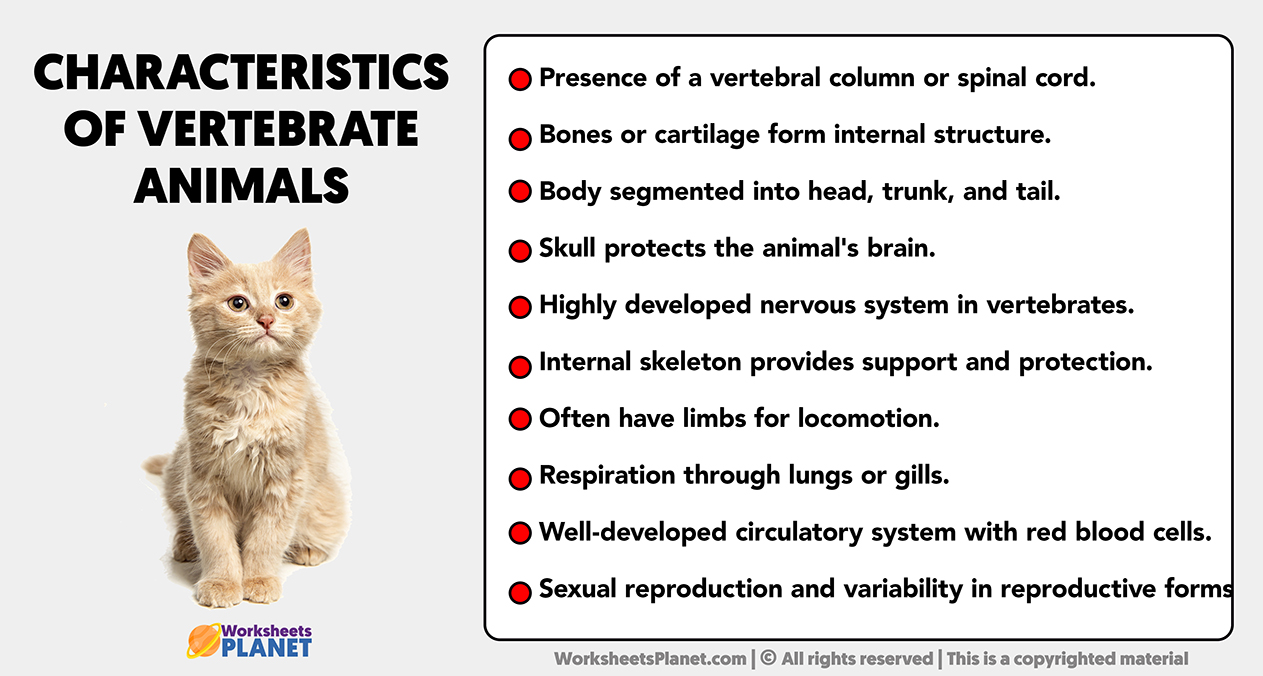Vertebrate animals are a diverse group characterized by the presence of a vertebral column or backbone. This subgroup of animals includes mammals, birds, reptiles, amphibians, and fish.
Vertebrates exhibit a well-developed internal skeleton, with the vertebral column providing structural support and protection for the spinal cord.

These animals typically possess bilateral symmetry, advanced nervous systems, and often, complex organ systems. Vertebrates have adapted to various environments and play crucial roles in ecosystems and the diversity of life on Earth.
Main Chracteristics of Vertebrate Animals
- Presence of a vertebral column or spinal cord.
- Bones or cartilage form internal structure.
- Body segmented into head, trunk, and tail.
- Skull protects the animal’s brain.
- Highly developed nervous system in vertebrates.
- Internal skeleton provides support and protection.
- Often have limbs for locomotion.
- Respiration through lungs or gills.
- Well-developed circulatory system with red blood cells.
- Sexual reproduction and variability in reproductive forms

